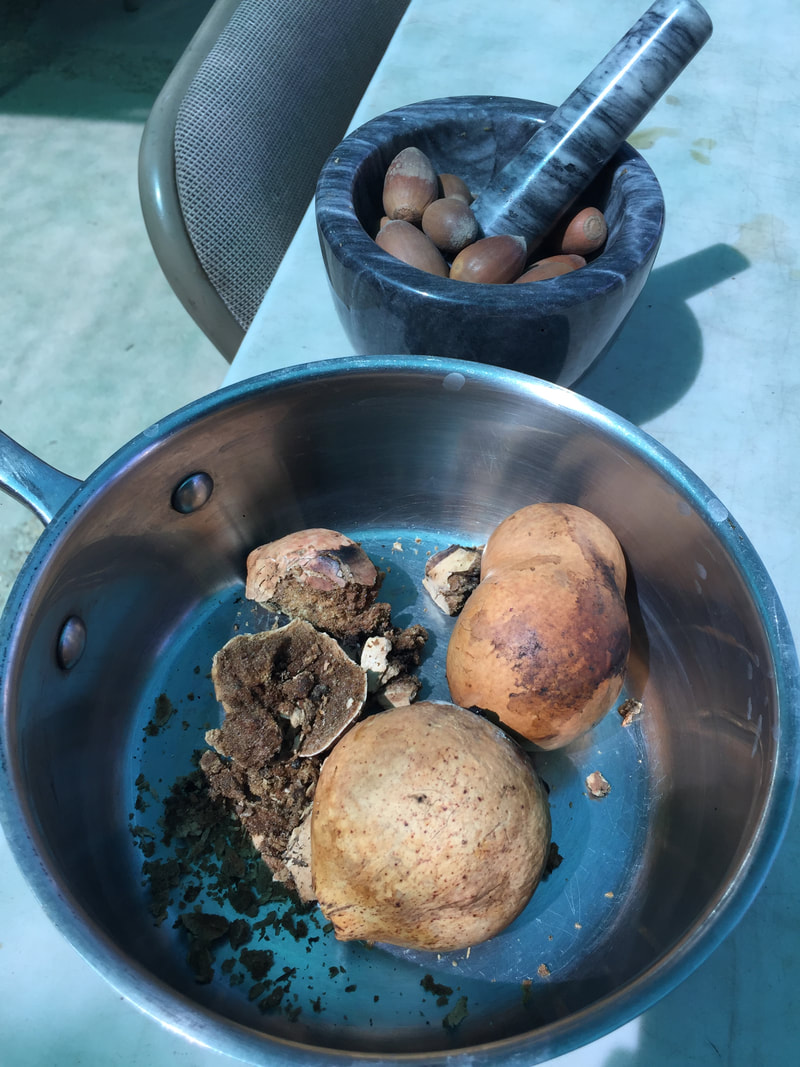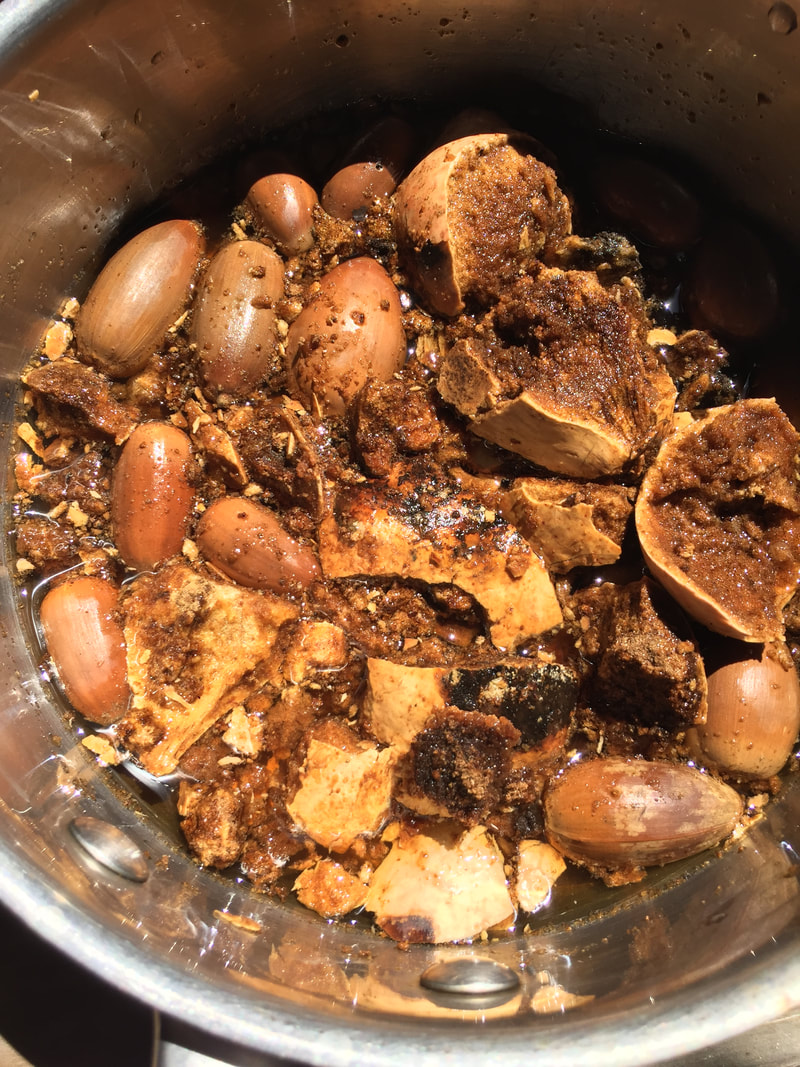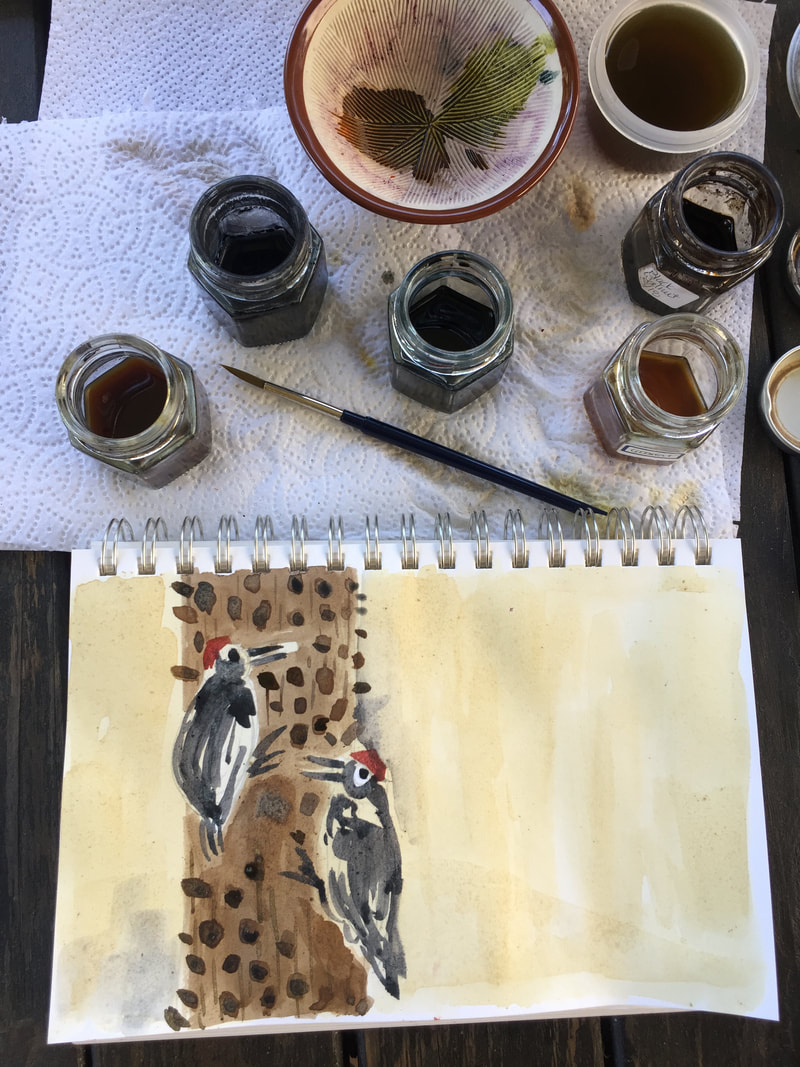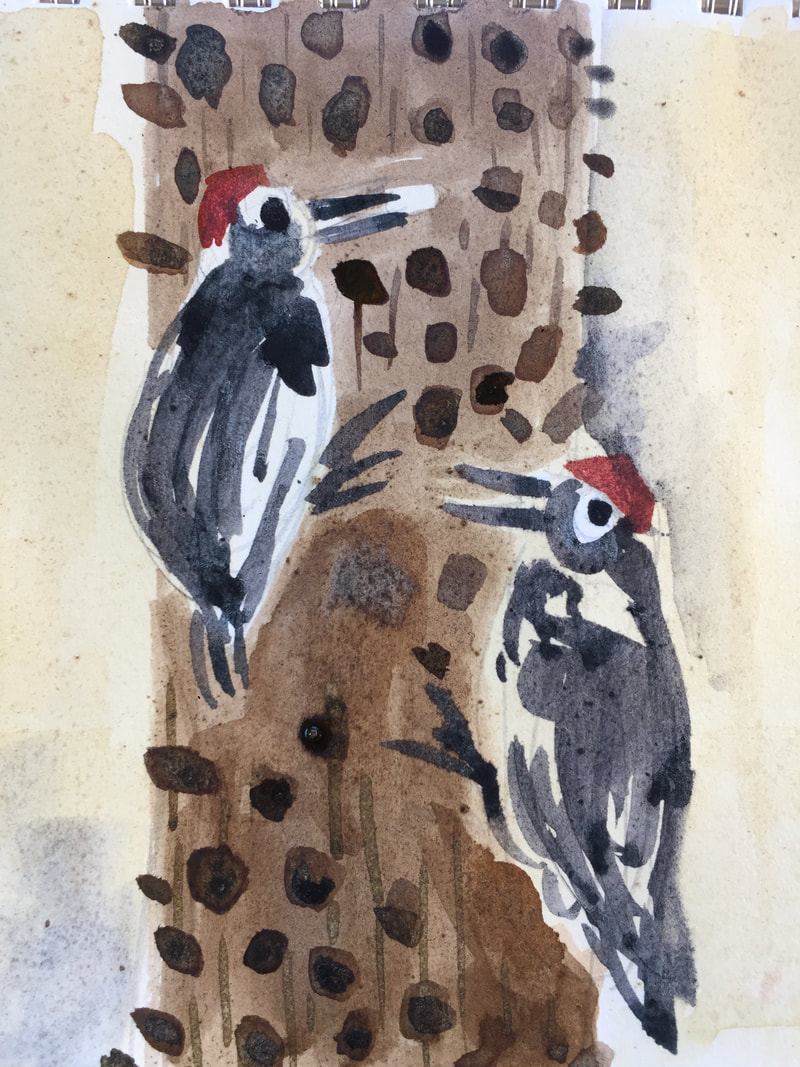|
I am working on a picture book about acorn woodpeckers, and what better colors to use in the art than acorns and “oak apples”! If you ever examined an oak tree, you might see some bring pinkish “apples” or the more common brown looking oak galls.
I was in a park in Lodi, CA, and all the oak trees had the most splendid looking “apples!” It was a beautiful sight! These “apples” are caused by certain wasps that lay their eggs in the bark, causing the tree to form a gall. The wasp larvae live inside this protective ball until it is time for them to grow up and leave. If you see a tiny hole in the gall this is where the wasp exited! Oak apples have been used since Medieval days in Europe as a fine dark brown ink for writing manuscripts as it doesn’t fade. In fact, the US Constitution was written in oak gall ink! Instructions: 3 “oak apples” also known as oak galls. Handful of old acorns. Break into tiny pieces. I was surprised how HARD the oak apples were! I let it soak in a pot with a small amount of water (just barely covering the galls) for 15 mins before putting it on the stove on low heat for 20 mins. As I wait, I jot down my list of plant colors I’m thinking of using: Beet: for the woodpeckers bright red crown. Charcoal: for the dark greys of the woodpeckers. Blue Spiralina: adding some blues to the woodpeckers. CA walnut: for rich deep brown (many people also use walnuts as a natural hair dye for a deep, dark brown.) After the 15 minutes I turned off the fire and let it steep for another 30 mins. And….when I checked on it, the oak galls re-absorbed all of the liquid! So I added a little bit of water to reconstitute. Then strained it into a jar. The color didn’t come out as dark as I wanted - probably because I added a little bit of water at the end. Next time I will skip the steeping part and strain it after boiling it for 30 mins. If one wanted to make ink, the process is a bit different, as you’ll need to add some iron to the liquid to really darken the color. But for now, I will just try this as is.
0 Comments
|
My adventures navigating through the world of art, inspiration, and nature.
|
Copyright 2018 Christina Chan. All rights reserved.




 RSS Feed
RSS Feed